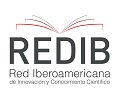COMPARACIÓN ENTRE EL MODELO PROBIT Y EL MODELO DE HILL PARA DETERMINAR LA EFICACIA DE IVERMECTINA SOBRE LARVAS DE Rhipicephalus (Boophilus) microplus (ACARI, IXODIDA: IXODIDAE) MEDIANTE LA TÉCNICA DE INMERSIÓN.
DOI:
https://doi.org/10.14409/favecv.v19isuplemento.10954Palabras clave:
Rhipicephalus microplus, test de inmersión de larvas, análisis estadísticoResumen
The aim of this study was to propose an alternative statistic treatment for the results obtained by testing the in vitro efficacy of ivermectin (IVM) against R. microplus using the larval immersion test in order to detect the emergence of resistant strains. The statistical analysis of the results obtained by this technique is standardized by the FAO who proposes the use of the Probit model. However there are alternative mathematical models that allow a more precise analysis of experimental data generating more information as nonlinear logistic equation, also called the Hill model. The results of the IVM efficacy against a sensible strain of R. microplus were analysed whit both model. A comparison between the results obtained with PROBIT and Hill model showed that the last one was able to make a more precise fit of the experimental data, generating more information about small IVM concentrations. The C50 (13.58 ppm) obtained with Probit model result smaller than the obtained with the Hill model (14.24 ppm), however the C90, C99 and the discriminant dose (19.31 ppm, 25.74 ppm, 51.48 ppm) obtained with de Hill model were bigger than the obtained with the Probit model (17.50 ppm, 21.98 ppm, 43.96 ppm).
Descargas
Publicado
Cómo citar
Número
Sección
Licencia
FAVE Sección Ciencias Veterinarias ratifica el modelo Acceso Abierto en el que los contenidos de las publicaciones científicas se encuentran disponibles a texto completo libre y gratuito en Internet, sin embargos temporales, y cuyos costos de producción editorial no son transferidos a los autores. Esta política propone quebrar las barreras económicas que generan inequidades tanto en el acceso a la información, como en la publicación de resultados de investigaciones.
Los artículos de la revista son publicados en http://bibliotecavirtual.unl.edu.ar/publicaciones/index.php/FAVEveterinaria/issue/current/, en acceso abierto bajo licencia Creative CommonsAtribución-NoComercial-Compartir Igual 4.0 Internacional.











